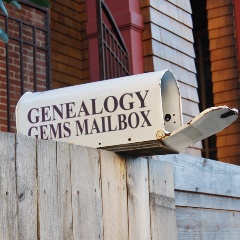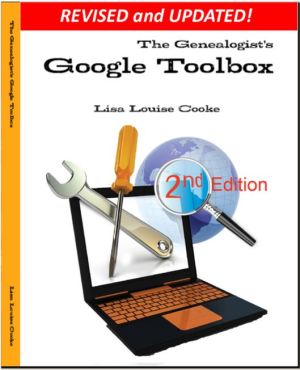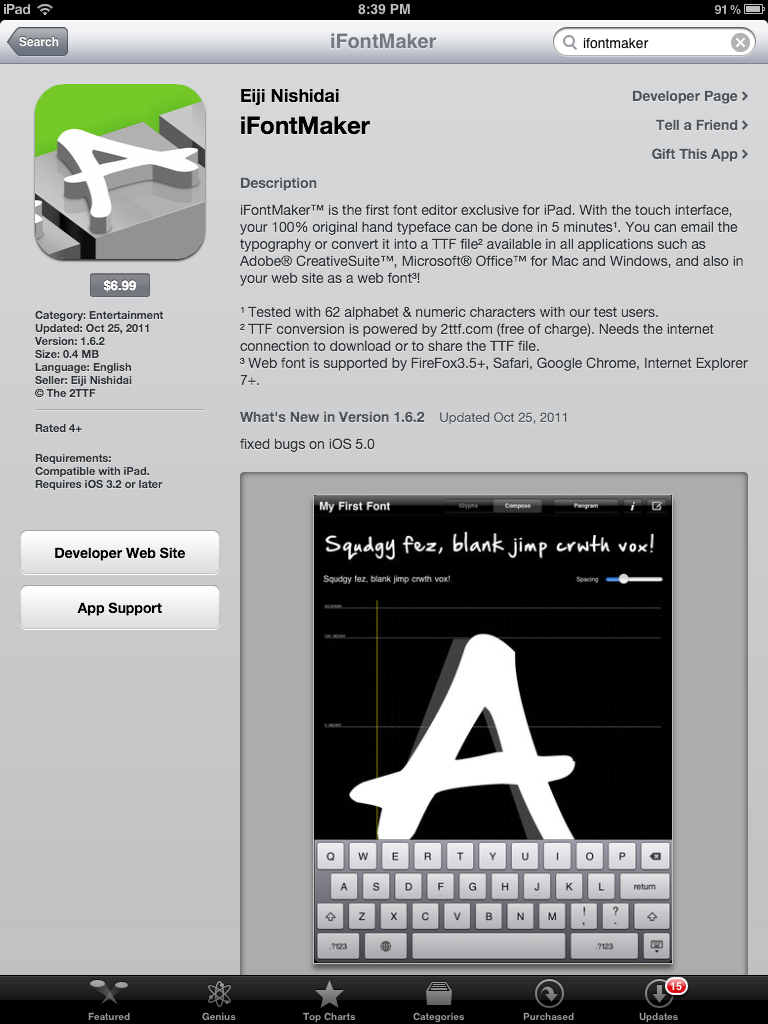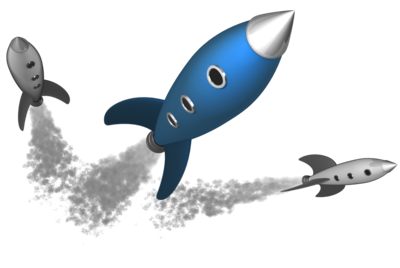Blog

MyHeritage Announces Automatic Genealogy Record Matching
Here’s the latest from MyHeritage:
MyHeritage is delighted to announce the launch of a breakthrough technology for the family history market – Record Matching.
Record Matching is designed to automatically find and match historical records (from our growing collection of 4+ billion records) to the 23 million family trees on MyHeritage…but with a twist! It’s the first and only technology to automatically search newspaper articles, books and other free-text documents.
So in addition to traditional records such as birth certificates, marriage documents, census records and many more, Record Matches of newspaper articles from our 300 year old newspaper archive, the largest historical newspaper collection in the world, can help you shed new light on the actual lives, personalities and achievements of your ancestors.

Premium Podcast Episode 91 – Paper, Ink, Fonts and Books
Date Published: September 19, 2012
[display_podcast]Click here to download the Show Notes pdf
MAILBOX:

Kathy has a question about name changes: “…If family members changed their last name (i.e. from Nystrom to Newstrom) later in life….How do I record it in my software?”
Lisa’s Answer: The surname we enter in a database is the one our ancestor was born with. You would certainly want to record any changes in that name and the time
Laurie from Washington is hot on the trail of her broadcasting Grandma: “We have a small collection of recorded 78’s of a radio show my grandmother hosted in Southern CA in 1948-1949 The station KGIL of the San Fernando Valley had the 30 min show on Monday & Wed evenings at 8pm. I don’t know how long it ran. The station has since been sold and taken off the air. Do you know if there is an archive for radio shows? The Show was billed I believe as the Pony Express news, hosted by Rubye Whitaker. I can attest to the great feeling it is to hear a voice from the past. She was a champion “whistler” and to hear her again in a recording brought back memories and feelings I did not realize I had forgotten.”
Lisa’s Answer: I am not aware of one comprehensive radio archive. The Library of Congress is usually my first stop, but I ran some searches and didn’t find anything listed for Rubye or the show. I also ran a search on her name, the radio station and the show in iTunes as many old radio shows are republished in old time radio podcasts. No hits though.

Remember that as you do your Google searches, the websites that might have mp3 audio files may not include her name, or even the name of the show. It depends of the information posted is searchable. So try also searching like this “San Fernando” radio shows” “audio download” “KGIL” “.,mp3” etc… My book The Genealogist’s Google Toolbox is full of additional strategies for Google searches.
Follow up from Laurie: “I want to share the big find from this past week. My grandmother Rubye entered a “float” in the 1946 Tournament of Roses Parade. This was the first parade after the end of WWII and her entry which was a real Covered Wagon all literally covered in flowers with a big V for victory on the side & pulled by 4 horses. My grandmother’s country western band The Covered Wagon Girls rode on the back as did my mother. Well this entry won the President’s Trophy Award. While we have the inscribed silver trophy there are no pictures of the actual float. I have been searching and no luck on a photo. I had a light bulb moment and switched mediums. Searched for video and there on YouTube I found a posting for the parade. Watched the video and WOW! There went the covered wagon in living color and moving. There I was doing the “happy dance” in the computer room! I have been in contact with the poster and through multiple peoples generosity we are receiving a DVD of the video for the family. While I am still searching for a photo I feel like I found the motherload with the video.
Watch 1946 Tournament of Roses Parade (At about 2:36 into the7:22 min video the Covered Wagon rolls by.)
GEM: Paper, Ink, Fonts and Books
Next to DNA and our fingerprints, our handwriting is one of the most unique things about us. No two people write exactly the same. In today’s digital age, handwriting is going by the way side, and I have a feeling that decades from now our descendants are going to be searching feverishly for even a scrap of paper with our personal handwriting on it, looking at it as a rare treasure like we look at old photos.
Just because pen and ink give way more and more to keyboard and screen, it doesn’t mean that we can’t lend our handwriting to our digital documents and projects. I’ve got a gem for you that will convert your handwriting into a font.
Fontifier < http://www.fontifier.com/ > allows you to create your own font by simply printing a template and filling it in with the letters of the alphabet, and then scanning and uploading it. Here’s how it works:
- Print out the Fontifier template sheet
- Write your characters on the template with a felt pen, and leave a margin around each character – just draw them in the center of each cell on the page.
- Scan the template at a resolution of 72 dpi, 75 dpi, or 100 dpi. – make sure it’s straight on the scanner bed. Make sure the scan captures the entire template, including the outer border, or your font will not be created correctly.
- Save the image file as a GIF, JPEG, PNG or TIFF
- Upload the template and create your font
- Preview and then buy your font
- Download your font
- Install your font for use with your computer programs
| So just what might you do with your personal handwriting font? Well you could: |
- Add a personal touch to your letters and documents.
- Use it in your scrapbooking or journaling.
- Keep a permanent record of your children’s handwriting.
Writing Fonts – Don’t want to take the time to create your own handwriting font? Type up what you want in the handwritten letters section of the Writing fonts.com website. You just click your mouse on the page and start typing and your words will appear in a handwritten print. You can even customize it – there are several handwriting fonts to choose from, both printing and cursive, you can select the appearance of the paper in the background – from modern white paper to a lovely antique paper.
You may want to add these notes to your scrapbooks, post them on your family history blog, send reminders our on them for the family reunion – I just think handwriting fonts add a personalized touch to any project and will take you reader just a bit by surprise. And in fact, I think folks are more likely to pay attention to and read something that appears on your blog in a handwritten font because it looks more personal.
http://www.writing-fonts.com/send-handwritten-letters-online

If you want to create some of this handwriting magic on your iPad, then you’ll want to check out the iFontMaker
iFontMaker allows you to draw your own complete font set and save it to use on your computer.

Speaking of fonts and printing, I found a couple of really neat short documentaries on a really neat website called www.Documentary.net It offers a very eclectic mix of documentary films that you just don’t see every day, and I came across two that fit into our theme in this gem.
The first is called “Birth of a Book”
The second documentary is called In Ink and Paper
New Digital Family History Books – July 2012 Report (FamilySearch)
BONUS ARTICLE LINK: Where Can I Borrow eBooks From?
1) Family History Archive website – books at BYU
After you do an initial keyword search take a second to look through the options in the left hand column because selecting some of these that apply to your search will go a long way to thinning out the search results, and get you results that are more applicable to what you are really looking for.
2) Allen County Public Library – Digital Books Online
The library is said to be the second-largest genealogy collection in the United States with more than 350,000 printed volumes and over 500,000 items of microfilm and microfiche. 8000 of those digitized genealogy titles are available free online.
Read more about the Allen County Public Library
Web site at http://www.acpl.lib.in.us.
3) Google Books at www.books.google.com
Chances are you have dug around at least a few times in Google Books, but I’ve got a few tips for you to help you get the most out of it.
First, if you haven’t been to Google Books in a while you’ll notice when you go to books.google.com that the home page looks different. It’s been split in to two sections – Research and Google Play. Research on the left side, is the original Google Books search engine, and this is where you’ll be doing most of your research.
A while back they added the Google Bookstore on the right hand side of the home page, and that’s now called Google Play. Google Play is basically Google’s answer to the iTunes store. This is where you can buy digitized books, apps, music, etc. But there are some free books tucked in there. Let me show you:
How to Find Free eBooks at Google Play
- Click the blue Go to Google Play button
- in the search box type the word such as “genealogy”
- Select Price from the menu and click Free selection.
- now you have a listing of all the free books that have the keyword Genealogy in Google Play, ready for download.
Search Within a Google Book – Next, although there is the main search box where you search for books, once you have selected a book you will see another search box in the column on the left. This search box is unique to the particular book you have on your screen, and can save you a ton of time finding what you are looking for. Just enter keywords and they will instantly be located inside the digitized book.
Ancestry Magazine at Google Books – Even though Ancestry magazine has gone out of business, all ten years of the magazine have been digitized and are available for free in Google Books.
- Go back to the Google Books homepage
- in the research search box on the left type in Ancestry Magazine
- Once you get the results list you’ll see lots of issues
- Click on the first issue that is not one of the highlighted ads
- Click that item, and you’ll get the entire issue digitized on your screen
- Check the “Search all issues” box
- Type in a keyword such as “immigration”
- Click the “Go” button.
Google Books has now instantly searched every issue for you and delivered to you a results list with each issue that contains the word immigration, and the word is highlighted. You could then go back and add more search words and operators as I discuss in my book The Genealogist’s Google Toolbox, that will help you get even more fine-tuned results.
And if you find something you want, you can:
- copy the link to that webpage
- add it to your Google Books library
- clip an article from the screen with a free tool like Evernote.com www.evernote.com
Wrap Up: National Quilt Register from Carolyn
“A friend, Kay, died of cancer in December 2008. Before she became ill, she and I would sometimes have lunch together and often found ourselves talking about our love for old quilts, family history etc. One time she showed me a quilt on a bed in her guest room – it had been made by someone in her family and she was very pleased to now have it.
Well, her husband has decided to downsize…I went to the estate sale this past week, just to see if there was anything I might have an interest in. I found a lovely vintage quilt in wonderful condition with an affordable price tag. I couldn’t remember for sure but thought it might be the quilt that Kay had displayed in her guest room. I asked Gary if he knew of any history on the quilt and he did not – only that it had belonged to Kay. I decided to buy it.
After getting it home, I noticed a tag on it that I had overlooked, pinned to a corner of the quilt: Illinois Quilt Research Project 1987 – 1995, Illinois State Museum, and an ID #. I found a reference online to this quilt project and also an email address. So I sent a message asking if they could tell me anything about this quilt. Got a reply today and to make a long story short, I learned that my friend was the person who had registered the quilt in 1989 and had also provided the names of her 3 aunts who made the quilt and a very brief history on the 3 women. It was estimated the quilt was made about 1940…I found out the pattern is called Missouri Daisy…
Just a really interesting little serendipity for me – to be able to end up with something that had been so special to my friend and to find out some of the history of the quilt. The quilt was made by Kay’s father’s 3 sisters (now deceased) and I have met her 90 year old father. The lady who responded to my email said most states have some kind of “quilt project” whereby individuals can register their heritage quilts. I had never heard of this before – have you?
Maybe other quilters or people who have family heritage quilts should consider the possibility of registering their quilts wherever there’s an opportunity?
Recommended App: Bento – FileMaker, Inc. Learn how to create an Heirloom Inventory in the Bento app in chapter 10 of my book Turn Your iPad into a Genealogy Powerhouse.
Ragtime Music by the marvelous Frederick Hodges at www.frederickhodges.com Tell him Lisa from Genealogy Gems sent you!

Get a Blast from the Past in Genealogy Gems Episode 140
 Way back in 2007 (I know, it’s ancient times in online terms) I started recording a little show called The Genealogy Gems Podcast. My studio consisted of a desktop PC and a $10 Radio Shack microphone. Back then I worked all week long to come up with 15 or 20 minutes of broadcast content. My first genealogy Gems were about techniques I was using in my own research and the technology that was moving faster every day.
Way back in 2007 (I know, it’s ancient times in online terms) I started recording a little show called The Genealogy Gems Podcast. My studio consisted of a desktop PC and a $10 Radio Shack microphone. Back then I worked all week long to come up with 15 or 20 minutes of broadcast content. My first genealogy Gems were about techniques I was using in my own research and the technology that was moving faster every day.
Before I moved to my new website earlier this year I removed the first 20 episodes from the podcast feed for a variety of reasons – hosting costs, sound quality, etc. Now with the new site we’ve got lots of room to stretch, and with some restoration the episode sound quality has been improved. So every so often I march a couple of episodes out of the vault, and in Genealogy Gems Podcast Episode 140 you’ll hear Episodes 3 and 4.
Episode 3 highlighted one of my favorite research strategies at the time which is still a favorite today: eBay Favorites eBay is not just for dvds and kitchy knick knacks. Like Google Alerts, eBay Favorites does the searching for you. Auctions delivered to your inbox could feature hard to find history books, yearbooks, and even photos of your ancestors and family bibles. Later in the episode we take those found genealogical items and talk about how to incorporate them into creative and meaningful family history displays.
Episode 4 originally aired on St. Patrick’s Day in 2007 and understandably touches on Irish genealogy. Then we move on to using YouTube for genealogy. YouTube was just a 2 year old toddler back then, but it was already showing it’s strength as an addition to our genealogy toolbox.
Enjoy listening to a blast from the past in Genealogy Gems Podcast Episode 140




